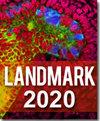Quarter-Century Explorations of Bioactive Polyphenols: Diverse Health Benefits.
IF 3.1
4区 生物学
Q2 Immunology and Microbiology
引用次数: 14
Abstract
Polyphenols, members of phytochemical superfamily rich in vegetables and fruits, include flavonoids, non-flavonoids, and phenolic acids. Their biological effects includes classical antioxidation (e.g., radical-scavenging, metal chelating, NOX inhibition, attenuation on mitochondrial respiration, inhibition on xanthine oxidase, and upregulations on endogenous antioxidant enzymes), multiple regulations on cell signaling (e.g., AMPK activation, SirT1 activation, eNOS activation, FOXO activation, NFκB inactivation, PI3K/AkT inhibition, mTORC1 inhibition, PKC inhibition, MAPK inhibition, ERK inhibition, JAK/STAT inhibition, IKK/JNK inhibition, PDE inhibition, β-catenin inactivation, downregulation on TLR expression, ACE inhibition, adiponectin elevation, attenuated ET-1 production, and K+ channel activation), and many other actions (e.g., inhibition on α-glucosidase, anticoagulation, γ-secretase inhibition, monoamine oxidase inhibition, LPL upregulation, ANGPTL4 suppression, upregulation on paraoxonase 1, PAI-1 downregulation, tPA upregulation, immunoregulation, epigenetic modulation, and altered gut microbiota). Such multi- targeting and functions exhibiting antioxidative stress and antiinflammation as major pillars along with many other antagonisms could not only afford healthy polyphenols suitable supplements for promoting health, but also advance them to therapeutic applications. This review aims to translate diverse polyphenolic biochemical actions to clinical applications in fighting against non-communicable diseases such as CVD, cancer, diabetes, obesity, neurodegeneration, inflammatory diseases (e.g., IBD, IBS, NAFLD, etc.), AMD, allergy, and autoimmunity as well as communicable infection (e.g., bacteria, fungal, and viral).生物活性多酚的四分之一世纪探索:多种健康益处。
多酚是富含蔬菜和水果的植物化学超家族的成员,包括类黄酮、非类黄酮和酚酸。它们的生物学作用包括经典的抗氧化作用(如自由基清除、金属螯合、NOX抑制、线粒体呼吸抑制、黄嘌呤氧化酶抑制、内源性抗氧化酶上调)、细胞信号的多重调节作用(如AMPK活化、SirT1活化、eNOS活化、FOXO活化、NFκB失活、PI3K/AkT抑制、mTORC1抑制、PKC抑制、MAPK抑制、ERK抑制、JAK/STAT抑制、IKK/JNK抑制、PDE抑制、β-连环蛋白失活、TLR表达下调、ACE抑制、脂联素升高、ET-1产生减弱和K+通道激活),以及许多其他作用(例如α-葡萄糖苷酶抑制、抗凝、γ-分泌酶抑制、单胺氧化酶抑制、LPL上调、ANGPTL4抑制、对氧磷酶1上调、PAI-1下调、tPA上调、免疫调节、表观遗传调节和肠道微生物群改变)。这种以抗氧化应激和抗炎症为主要支柱的多靶点和功能,不仅可以为健康的多酚类物质提供有益健康的补充,而且可以促进其在治疗方面的应用。本综述旨在将多酚的多种生化作用转化为临床应用,以对抗非传染性疾病,如心血管疾病、癌症、糖尿病、肥胖、神经退行性疾病、炎症性疾病(如IBD、IBS、NAFLD等)、AMD、过敏、自身免疫以及传染性感染(如细菌、真菌和病毒)。
本文章由计算机程序翻译,如有差异,请以英文原文为准。
求助全文
约1分钟内获得全文
求助全文
来源期刊

Frontiers in Bioscience-Landmark
生物-生化与分子生物学
CiteScore
3.40
自引率
3.20%
发文量
301
审稿时长
3 months
期刊介绍:
FBL is an international peer-reviewed open access journal of biological and medical science. FBL publishes state of the art advances in any discipline in the area of biology and medicine, including biochemistry and molecular biology, parasitology, virology, immunology, epidemiology, microbiology, entomology, botany, agronomy, as well as basic medicine, preventive medicine, bioinformatics and other related topics.
 求助内容:
求助内容: 应助结果提醒方式:
应助结果提醒方式:


